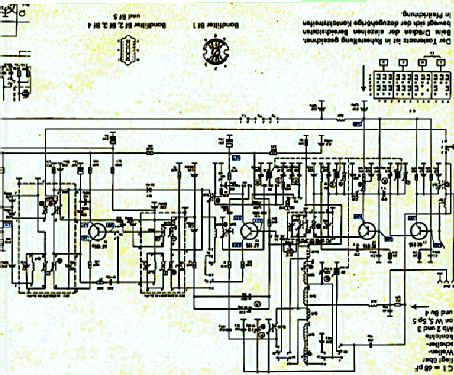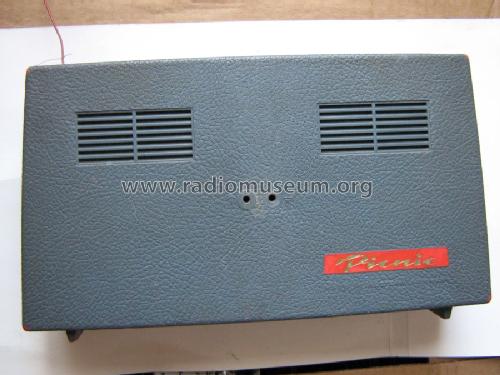- Country
- Germany
- Manufacturer / Brand
- Telefunken Deutschland (TFK), (Gesellschaft für drahtlose Telegraphie Telefunken mbH
- Year
- 1962/1963
- Category
- Broadcast Receiver - or past WW2 Tuner
- Radiomuseum.org ID
- 3989
Click on the schematic thumbnail to request the schematic as a free document.
- Number of Transistors
- 9
- Main principle
- Superheterodyne (common); ZF/IF 460/6750 kHz
- Tuned circuits
- 7 AM circuit(s) 11 FM circuit(s)
- Wave bands
- Broadcast, Long Wave, Short Wave plus FM or UHF.
- Power type and voltage
- Dry Batteries / 5 × 1,5 Volt
- Loudspeaker
- Permanent Magnet Dynamic (PDyn) Loudspeaker (moving coil) - elliptical
- Power out
- 1.3 W (unknown quality)
- Material
- Plastics (no bakelite or catalin)
- from Radiomuseum.org
- Model: Picnic 3291 - Telefunken Deutschland TFK,
- Shape
- Portable set > 8 inch (also usable without mains)
- Dimensions (WHD)
- 310 x 180 x 93 mm / 12.2 x 7.1 x 3.7 inch
- Notes
-
Ferritantenne 22 cm! Lautsprecher mit Tigges Magnet,
UKW/FM 87,5-100 MHz, KW/SW 49 - 19 m.Siehe auch Telefunken Picnic 3391 mit UKW/FM 87,5-104 MHz und abweichender Transistorbestückung.
- Net weight (2.2 lb = 1 kg)
- 2.3 kg / 5 lb 1.1 oz (5.066 lb)
- Price in first year of sale
- 285.00 DM
- Source of data
- Handbuch VDRG 1962/1963 / Radiokatalog Band 1, Ernst Erb
- Literature/Schematics (1)
- -- Original-techn. papers.
- Other Models
-
Here you find 3573 models, 3159 with images and 2114 with schematics for wireless sets etc. In French: TSF for Télégraphie sans fil.
All listed radios etc. from Telefunken Deutschland (TFK), (Gesellschaft für drahtlose Telegraphie Telefunken mbH
Collections
The model Picnic is part of the collections of the following members.
Forum contributions about this model: Telefunken: Picnic 3291
Threads: 1 | Posts: 1
Achtung beim Batteriewechsel: Die Batterien befinden sich in der hinteren Gehäusehälfte. Um diese wechseln zu können müssen die Gehäuseteile getrennt werden. Als Erstes ist der Tragegurt abzunehmen und dann müssen die beiden Halterungen um 90° nach recht gedreht werden. Jetzt können die Teile voneinander getrennt werden.
Werner Wussow, 03.Jan.16


































